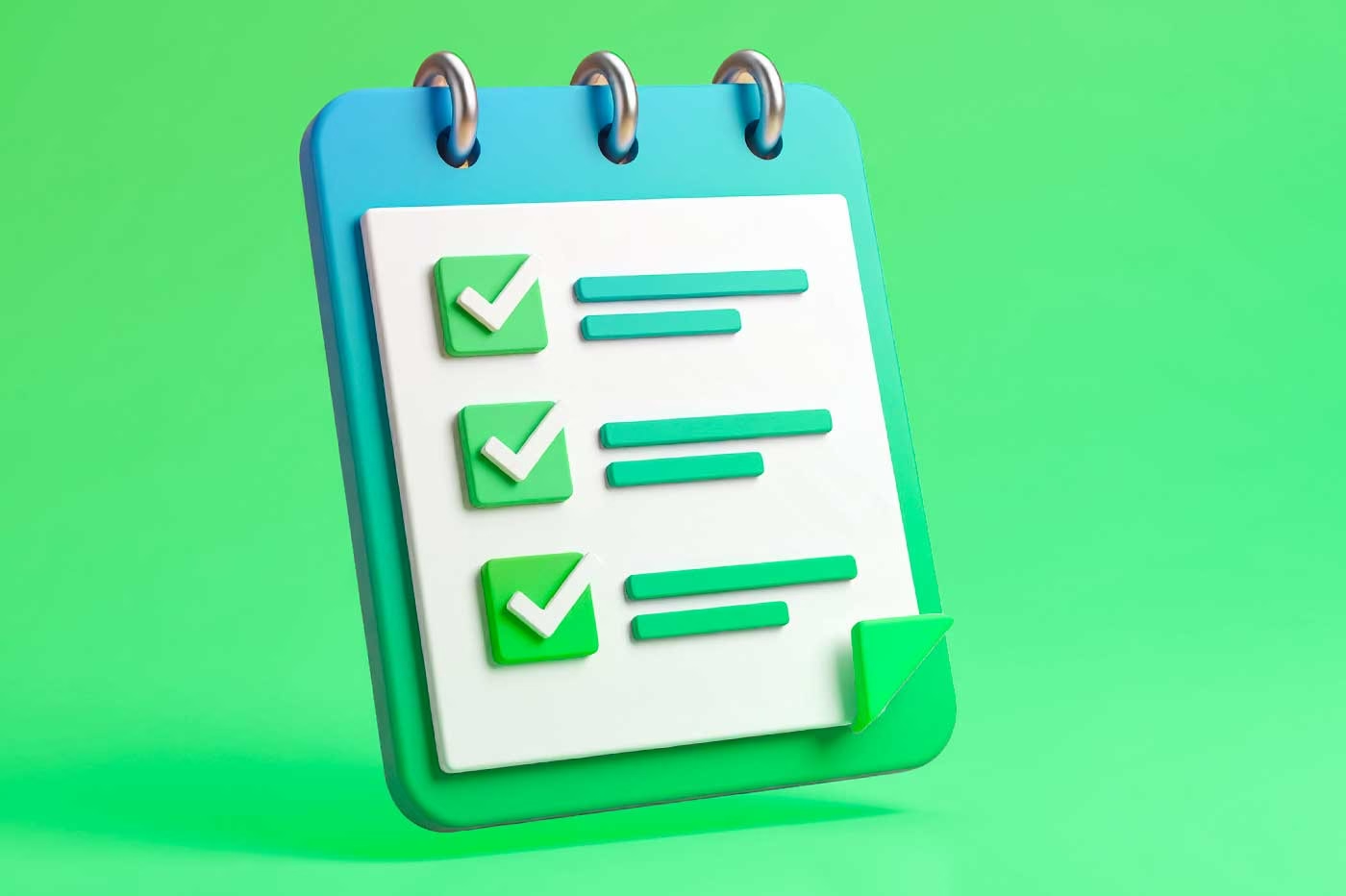The Final Stretch: Are You Truly Ready for 2026?
The year is 2026. Your retirement party is behind you, the cake has been eaten, and the well-wishes are still echoing in your inbox. But now it’s Monday morning—the first of many without a commute, deadlines, or meetings. What does this new chapter actually feel like?
If you’re planning to retire in 2026, first off—congratulations. You’ve likely spent decades building your career, saving diligently, and imagining this day. Reaching this point is no small feat. But as exciting as it is, the final stretch before retirement is one of the most important—and, for many, the most stressful—parts of the journey.
Here’s why: it’s easy to feel “mostly ready,” but what does truly ready look like?
Have you stress-tested your retirement plan?
Are you prepared for healthcare costs, inflation, or a surprise market downturn?
Do you know how your income will flow once the paychecks stop?
These aren’t questions to leave unanswered. Too many near-retirees underestimate the value of the final planning years, thinking the heavy lifting is over. But this period is your pre-flight checklist—the last chance to catch turbulence before takeoff.
This article walks you through a clear, six-step process to help you confidently retire in 2026—not just with optimism, but with a well-grounded plan. Whether you’re working with a financial advisor or handling it solo, these steps will help you move from “hopeful” to “secure.”
Let’s begin the countdown to your future.
Table of Contents
Step 1: The Retirement Reality Check – A Deep Dive Into Your Numbers
From Paycheck to “Playcheck”: Defining Your Retirement Lifestyle
You’ve worked hard to build savings, but how do you know it’s enough? Before you can confidently retire in 2026, you need to answer one essential question: What will your day-to-day life actually cost once the paychecks stop?
This isn’t about just surviving—it’s about thriving. Retirement isn’t a pause; it’s a pivot. And to enjoy your freedom, you need clarity on what that freedom costs.
Track Everything—Starting Now
Think of the next 3 to 6 months as a personal financial audit. Track every dollar spent—groceries, gas, golf, and even those impulse Amazon buys. Why? Because guesswork leads to gaps, and gaps lead to stress. Real data creates real confidence.
Categorize Your Expenses
Break your spending into three clear categories:
-
Needs: These are the must-haves—housing, utilities, groceries, healthcare premiums, insurance, and taxes.
-
Wants: This is where retirement becomes fun—travel, hobbies, dining out, entertainment, and splurges.
-
The Unexpected: Set aside funds for those inevitable surprises—home repairs, car replacements, or helping adult children navigate tough seasons.
Apply the “Inflation Test”
Once you have your numbers, project them forward. Don’t anchor your retirement plan in today’s prices. Use a realistic annual inflation estimate (3–4%) to model how your expenses might grow in 2026, 2036, and beyond. This simple projection can be a wake-up call—or a powerful confidence boost.
Planner’s Tip: “We’ll sit down together and use your actual spending data to build a dynamic retirement budget—then stress-test it against different inflation and market scenarios to make sure it holds up over time.”
Why This Step Matters
You can’t build a retirement plan on vague estimates. A deep dive into your spending is the foundation for every other decision that follows. It gives you the power to decide if you’re ready to retire in 2026—not based on guesswork, but on facts.
Step 2: Maximize Your Final Contributions & Master Your Income Streams
Supercharging Your Savings and Assembling Your Retirement Paycheck
As you gear up to retire in 2026, these final earning years are your last—and best—chance to significantly boost your retirement savings and fine-tune your future income plan. This step is all about being intentional with every dollar: contributing smarter, not just more, and building a reliable income strategy you can count on.
Max Out Those Catch-Up Contributions
If you’re 50 or older, the IRS gives you extra runway to turbocharge your savings.
Here’s what you can contribute in 2025 and (expected) 2026:
-
401(k), 403(b), and most 457 plans:
-
Standard limit: $23,000
-
Catch-up contribution: + $7,500
-
Total: $30,500 per year
-
-
-
Standard limit: $7,000
-
Catch-up contribution: + $1,000
-
Total: $8,000 per year
-
Use this window to stash away as much as possible. These final years of compounding can make a noticeable difference over a long retirement.
Use an HSA Like a Retirement Weapon
If you’re enrolled in a high-deductible health plan, a Health Savings Account (HSA) isn’t just for co-pays—it’s a stealth retirement account.
-
Tax-deductible contributions
-
Tax-free growth
-
Tax-free withdrawals for qualified medical expenses
In 2025, the HSA contribution limits are $4,150 for individuals and $8,300 for families, with an additional $1,000 catch-up if you’re 55 or older.
Understand Pension Payout Options
If you’re lucky enough to have a pension, don’t overlook your payout structure—it’s a permanent decision.
-
Single Life: Higher monthly income, but ends when you do.
-
Joint and Survivor: Slightly reduced monthly payments, but continues for your spouse’s lifetime.
Consider your health, your partner’s financial independence, and whether other assets could fill the income gap if needed.
Get Strategic with Social Security
Claiming early might seem tempting—but it comes with a cost. The longer you wait, the higher your monthly benefit:
-
Claiming at 62 = up to 30% reduction
-
Waiting until age 70 = up to 32% increase from Full Retirement Age
Also explore spousal and survivor benefits, which can play a key role in your household’s overall retirement income plan.
Planner’s Tip: “Let’s run a Social Security analysis. We can model different claiming strategies to see which one provides the most lifetime income for your specific situation.”
Why This Step Matters
By maxing out your final contributions and assembling a diversified, reliable income strategy, you move one step closer to retiring with clarity and confidence. When you’re ready to retire in 2026, your “retirement paycheck” should feel as seamless and steady as your working one once did.
Step 3: De-Risking Your Portfolio – The Glide Path to Preservation
Shifting from Growth Engine to Capital Preservation
If your plan is to retire in 2026, you’re entering a critical window where protecting your savings becomes just as important as growing them. You’ve spent decades accumulating wealth—now it’s time to shift toward preserving it.
One of the biggest risks retirees face is what’s known as sequence of returns risk. Put simply, a major market downturn early in retirement can wreak havoc on your portfolio—and your peace of mind. The key to avoiding this? A thoughtful transition strategy.
Understand Your Current Allocation
Start with a portfolio review. How are your assets currently split between stocks, bonds, and cash?
-
If you’re still heavily invested in equities, you may be overexposed to short-term volatility.
-
On the flip side, going too conservative too quickly can hinder long-term growth and purchasing power.
The right balance depends on your goals, timeline, and tolerance for risk.
The Glide Path: A Gradual Shift
A smart strategy is to follow a glide path—gradually reducing stock exposure and increasing allocations to more stable assets as you approach your retirement date.
Think of it as dialing down the risk rather than slamming on the brakes. This helps preserve gains while still allowing some growth potential to combat inflation over a 20–30 year retirement.
Rebalancing with a Purpose
Rebalancing isn’t just about selling off risky assets. It’s about harvesting gains—selling the winners and reallocating to less volatile options like high-quality bonds, CDs, or short-term fixed income.
Done intentionally, rebalancing helps reduce portfolio risk while keeping your strategy aligned with your retirement horizon.
Use a Cash Bucket for Stability
One of the most practical (and powerful) tools? The cash bucket strategy.
-
Set aside 1–2 years of living expenses in cash or near-cash investments.
-
This reserve acts as a buffer, so you don’t have to sell stocks in a downturn just to cover basic expenses.
It provides flexibility, peace of mind, and time for markets to recover if needed.
Planner’s Tip: “Your risk tolerance will change in retirement. We need to adjust your investment strategy to reflect this new reality, focusing on income generation and stability.”
Why This Step Matters
A well-designed glide path doesn’t just protect your portfolio—it protects your future lifestyle. As you prepare to retire in 2026, now is the time to trade risk for resilience.
Step 4: The Healthcare Gauntlet – Planning for Your Biggest Wildcard
Beyond Medicare: Confronting the True Cost of Health in Retirement
You can meticulously plan your expenses, portfolio, and income strategy—but one variable remains wildly unpredictable: healthcare. For many retirees, it’s the largest and most uncertain expense they’ll face. If you’re aiming to retire in 2026, this is one risk you can’t afford to overlook.
Let’s break it down.
Medicare: What You Need to Know at 65
If you’ll be 65 or older when you retire, Medicare will likely become your primary insurer. But don’t assume it’s automatic—there’s a timeline to follow.
-
Enrollment Window: Your Initial Enrollment Period (IEP) begins 3 months before your 65th birthday and ends 3 months after. Miss it, and you may face lifetime penalties.
-
Part A covers hospital stays and is usually premium-free.
-
Part B covers outpatient care and comes with a monthly premium.
-
Part D covers prescription drugs—and yes, you need it even if you’re healthy.
Then there’s the big decision: Original Medicare + Medigap or a Medicare Advantage (Part C) plan?
-
Original Medicare + Medigap:
-
Pros: Broader provider access, flexibility across state lines.
-
Cons: Higher monthly costs, multiple plans to coordinate.
-
-
Medicare Advantage:
-
Pros: Lower premiums, bundled plans with added perks.
-
Cons: Restricted networks, higher out-of-pocket costs if you need significant care.
-
Choosing between them depends on your budget, travel plans, and how you prefer to manage your care.
Retiring Before 65? Bridge the Gap
If you plan to retire in 2026 but won’t be 65 yet, you’ll need interim coverage. Options include:
-
COBRA: Temporary extension of your employer coverage—usually expensive.
-
ACA Marketplace Plans: May be more affordable depending on income, but plan carefully.
Either way, this gap can be costly and complex, so build it into your retirement budget.
Long-Term Care: Planning for the “What If”
Here’s a hard truth: 70% of people over age 65 will require some form of long-term care. And it’s not covered by Medicare.
You have three main options:
-
Traditional LTC Insurance: Offers the most coverage, but premiums can rise over time.
-
Hybrid Life/LTC Policies: Combine life insurance with long-term care benefits.
-
Self-Funding: Only an option for those with significant assets set aside.
Planner’s Tip: “Healthcare planning is complex. Let’s connect you with a Medicare specialist and evaluate your long-term care strategy to ensure this risk is managed.”
Why This Step Matters
Without a plan, healthcare costs can quietly erode your retirement savings. The time to act is before you need care—not after. By facing the healthcare gauntlet head-on, you’ll move one step closer to confidently retiring in 2026 with peace of mind.
Step 5: The Withdrawal Strategy – How to Pay Yourself Without Going Broke
Tapping Your Nest Egg Intelligently
You’ve saved for decades. Now comes the tricky part—spending it wisely.
Once you retire in 2026, your paycheck stops, but the bills don’t. A thoughtful withdrawal strategy is key to making your money last not just years, but decades. And here’s the kicker: how you withdraw is just as important as how much you withdraw.
Let’s explore what smart retirement income really looks like.
Tax-Efficient Withdrawals: Order Matters
When it’s time to tap your savings, the sequence of withdrawals can make or break your tax bill.
Here’s a common tax-efficient approach:
-
Taxable accounts (like brokerage accounts): Tap these first to benefit from capital gains treatment and avoid early IRA withdrawals.
-
Tax-deferred accounts (like Traditional IRAs or 401(k)s): Use next, especially after age 59½, when withdrawals are penalty-free.
-
Roth IRAs: Save these for last. They grow tax-free and aren’t subject to Required Minimum Distributions (RMDs), giving you flexibility later in retirement.
This strategy can help keep your tax bracket lower and your portfolio stronger over time.
Roth Conversions: Still Time to Act?
Even if you plan to retire in 2026, you may still have time to consider Roth conversions—moving money from a traditional IRA or 401(k) to a Roth IRA now and paying the taxes at today’s rates.
Benefits include:
-
Tax-free withdrawals in retirement
-
Lower future RMDs, which can reduce your taxable income later
-
More control over your tax bracket in your 70s and 80s
But timing and tax brackets are key, so this move should be carefully modeled with your advisor.
Beyond the 4% Rule: Smarter Withdrawals
The 4% Rule is a basic guideline suggesting you can withdraw 4% of your portfolio annually without running out of money. But in today’s market, it’s too rigid for many retirees.
Instead, consider dynamic withdrawal strategies, such as the guardrail method, which adjust your withdrawals based on how the market is performing. If returns are strong, you can take more. If they’re weak, you scale back slightly. This adds resilience to your plan and can extend your portfolio’s lifespan.
Planner’s Tip: “We will create a customized, tax-efficient withdrawal plan that coordinates with your Social Security and pension income, designed to minimize your tax bill and maximize your portfolio’s longevity.”
Why This Step Matters
The shift from saving to spending requires new thinking. You’ve built a nest egg—now it’s time to turn it into a reliable, tax-efficient retirement income stream. A well-planned withdrawal strategy can help you retire in 2026 with confidence, clarity, and cash flow that lasts.
Step 6: The “Soft” Plan – Estate, Legacy, and Purpose
Beyond the Balance Sheet: Designing Your Best Life
Retirement isn’t just a numbers game—it’s a life transition. Once you’ve handled the spreadsheets and simulations, there’s a deeper question waiting: What will this next chapter mean for you, your family, and your legacy?
To truly retire in 2026 with peace of mind, it’s time to shift from asset management to life design. That means refining your estate plan, clarifying your legacy, and envisioning a meaningful use of your time.
Start with an Estate Plan Check-Up
Estate planning isn’t just for the ultra-wealthy—it’s for anyone who wants their wishes respected. Ask yourself:
-
When was the last time you reviewed your will, trusts, powers of attorney, and healthcare directives?
-
Have there been major life changes—births, deaths, marriages, divorces—that might call for updates?
Outdated documents can cause confusion, delays, or unintended outcomes. A simple review now can prevent a legal headache later.
Check Your Beneficiary Designations
Here’s something many people overlook: Beneficiary designations override your will. That means even if your will says one thing, your retirement account, life insurance, or annuity might go to someone else—if the forms aren’t updated.
Review every single account to ensure it reflects your current wishes.
Define Your Legacy
Your legacy isn’t just what you leave behind—it’s what you pass on. Maybe that’s a charitable cause you support, a scholarship you want to fund, or values you want to instill in your children.
If you’re considering charitable giving, there are smart financial strategies—like donor-advised funds or qualified charitable distributions—that can maximize your impact while minimizing your tax bill.
Find Purpose in Retirement
Financially, you may be ready to retire in 2026, but what about emotionally?
-
What will your days look like?
-
How will you stay connected, engaged, and fulfilled?
Whether it’s travel, grandkids, part-time work, hobbies, or volunteering, having a plan for your time is just as important as a plan for your money. Retirement isn’t the end—it’s your next adventure.
Planner’s Tip: “Our role extends beyond managing your money. Let’s talk about your goals for your family, your community, and yourself. A truly great plan incorporates it all.”
Why This Step Matters
The “soft” side of retirement is often the most overlooked—and the most impactful. Planning your legacy and your lifestyle gives purpose to all the financial work you’ve done. Because in the end, retirement isn’t just about leaving work—it’s about living well.
In Conclusion: Your Countdown to Confidence
Retirement is one of life’s biggest transitions—but it doesn’t have to be one of the most stressful. If you’re hoping to retire in 2026, taking a proactive, thoughtful approach today can lead to a more secure and fulfilling tomorrow.
Let’s quickly recap your 6-step pre-retirement checklist:
-
Reality Check – Know your numbers
-
Maximize Income – Boost savings and build your retirement paycheck
-
De-Risk Your Portfolio – Shift toward stability
-
Healthcare Planning – Understand Medicare and long-term care
-
Withdrawal Strategy – Pay yourself tax-efficiently
-
Legacy & Purpose – Plan for your life beyond money
These aren’t just financial exercises—they’re confidence builders. They’re about turning uncertainty into clarity and anxiety into action.
By walking through these steps now, you’re not just preparing to retire—you’re preparing to retire in 2026 with purpose, peace of mind, and a plan that reflects what matters most to you.
Use this guide as a starting point for meaningful conversations with your financial advisor, your spouse, or your loved ones. And when you’re ready, we’re here to help you personalize it.
Schedule a review with us in the coming months to walk through your 2026 retirement checklist and start building your bridge to a confident future.


